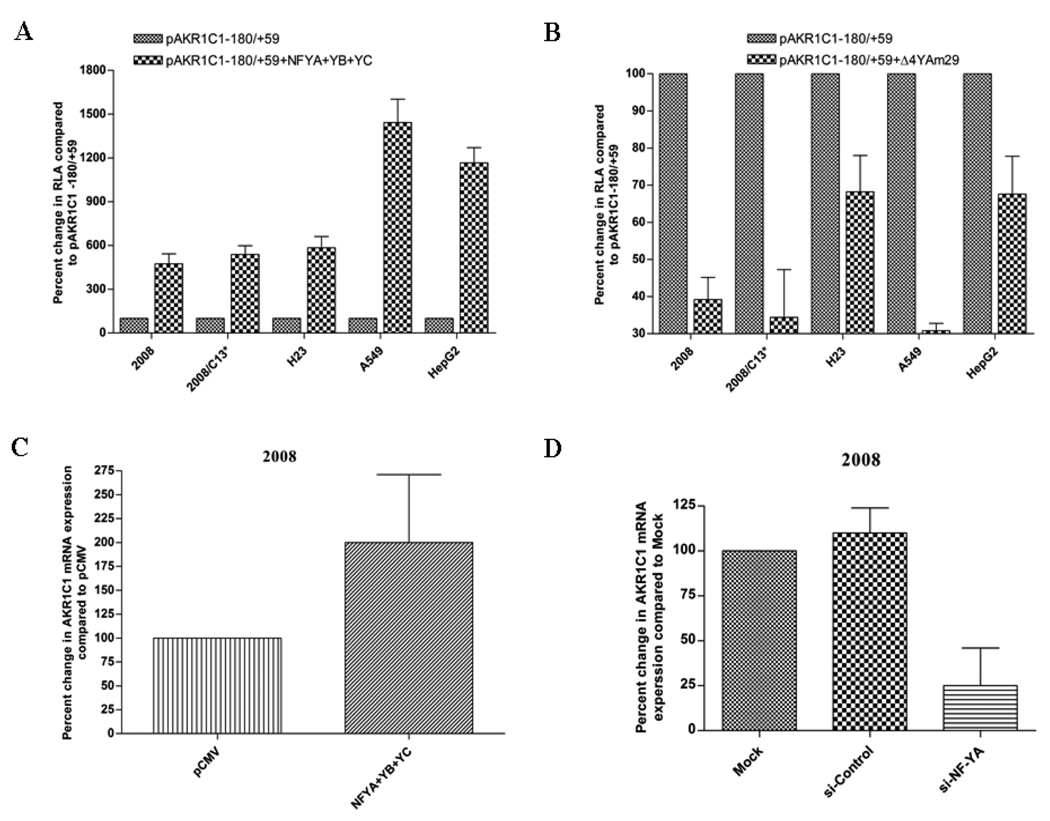Fig. 6.
Functional analysis of NF-Y in regulating the transcription of human AKR1C1 in human ovarian, lung and liver carcinoma cells. (A) Cells were transiently transfected with 2µg of NF-YA, -YB and -YC cDNA expression vector along with the proximal promoter pAKR1C1 −180/+59. (B) Cells were transiently transfected with 2µg of the NF-YA dominant-negative expression vector along with the proximal promoter pAKR1C1 −180/+59. Luciferase assay was performed as described in Materials and Methods. Each experiment was performed in duplicate and repeated at least three times. To directly assess the effect of NF-Y on the expression of AKR1C1 mRNA, human ovarian carcinoma cells (2008) were transfected with (C) 1µg of NF-YA, -YB and -YC cDNA expression vector or pCMV control vector and (D) Five hundred picomoles of NF-YA siRNA or siRNA-scramble as the negative control. Twenty four hours after transfection RNA was isolated and the expression of AKR1C1 mRNA was assayed using real-time RT-PCR. Each experiment was performed in duplicates and repeated at least two times.

